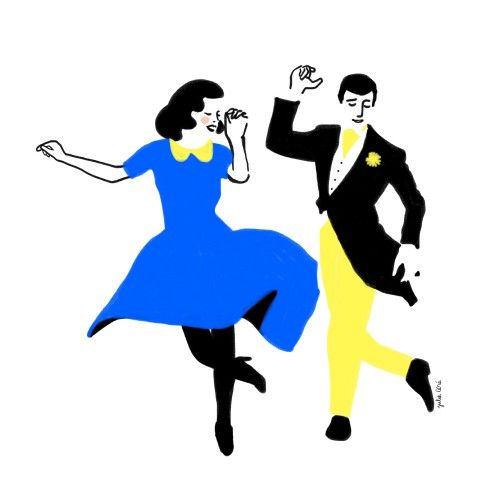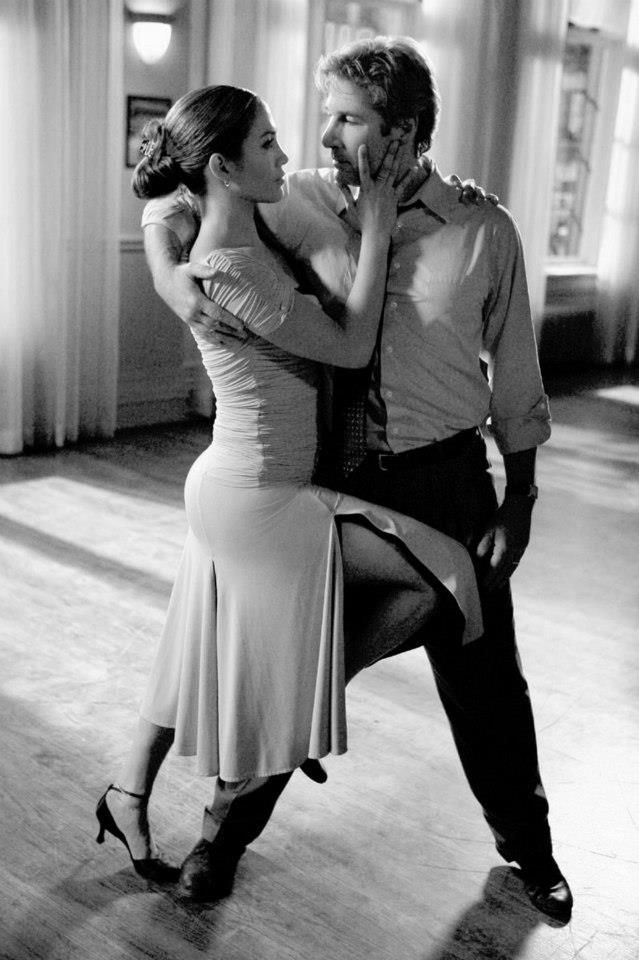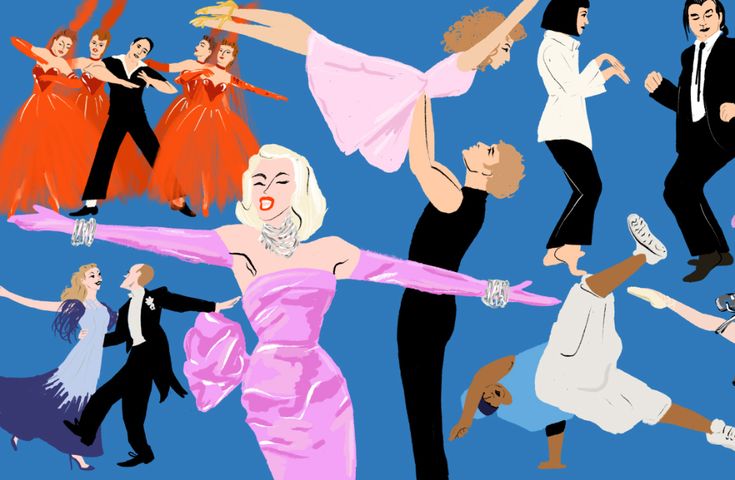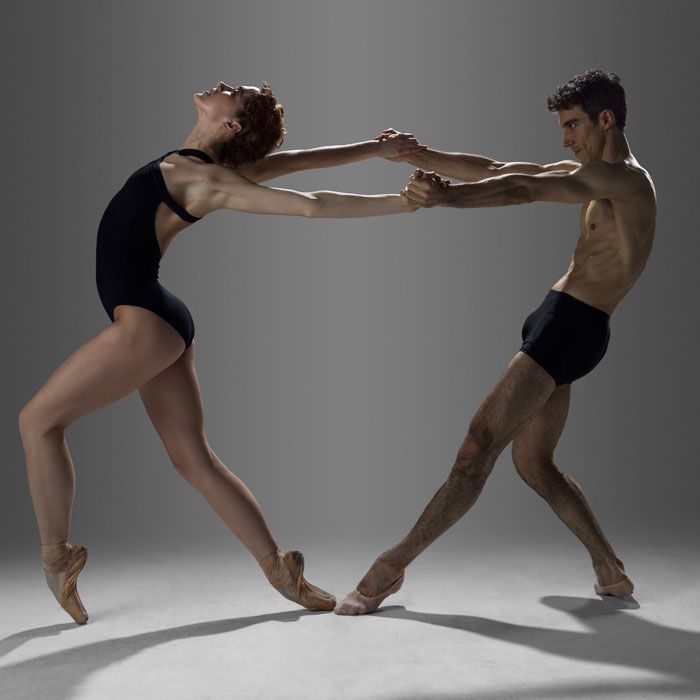How to dance lindy hop
Fundamentals – Lindy Hop Moves
We will guide you through an easy learning experience and in a few months you will be ready to join the Intermediate Lindy Hop program to refine your technique and learn more advanced stuff. Stick with the program and we promise you are going to have so much fun learning.
Here is a list of “all” the fundamental moves lists on the Lindy Hop Moves website. However, if you want to take part in the Fundamentals Course, we will be publishing the course recommendation list soon.
Basic positions and weight changes Basic positions for Lindy Hop and weight changes for leaders and followers with the basic footwork. https://youtu.be/nd_UZhLmAtk Amy (follower) and Reuel (leader) teach the basic footwork of Lindy Hop: step, step, triple-step, step, step, triple-step. Plus ...
Fundamental posture & footwork Kevin and Jo explain the technique for the basic Lindy Hop footwork, posture and general positioning. https://youtu.be/0uj8iD2Oyag Leaders start with your left foot; followers start with your right foot.Footwork: the triple-step, the rock-step (also known as the ...
Basic footwork and simple patterns Beginner basic steps and footwork with a few patterns. https://youtu.be/rbxqTcKj2U8 Leaders make sure that you start your basic footwork with your left leg on count 1.Followers make sure that you start the basic with your right ...
Beginner basic movements and Lindy Circle Peter and Stacia show basic Lindy Hop movements with triple steps, a few basic moves, as well as the Lindy Circle. https://youtu.be/CF0KIsQR6A4 The video starts with the footwork of the basic 8-count rhythm and then ...
Basic 30s Charleston and Kick Through Bobby and Crista show the basic of the Charleston side by side and how to do the Kick Through. https://youtu.be/dPjS6QVqltk The video starts with basic Charleston (groove walks), with the addition of the kicks to . ..
..
30s Charleston, Skip up (a.k.a Kick the Dog) and Kick Through Peter and Liz show the basic Charleston as well as the Skip Up and Kick Through. https://youtu.be/Cg0mTrMlc94 The video starts with the basic (Groove Walk) starting with a Touch-Step. Then ...
Lindy Hop basic figures and technique Jean and Bromley show 8-count footwork moves. https://youtu.be/pnWF9Lb7QaU In this video you will find a basic 8-count figure in closed position, the Toss-Across (also known as the „kompis“), the Swingout from closed, the Promenade and ...
More Lindy Hop basic moves and technique Manu and Ann show the basic 6-count rhythm with triple steps and some basic figures: https://youtu.be/BavaDEeN-Zc In this video you will find the basic 6-count in closed position, a Send-out, the basic 6-count in ...
Fundamental 6-count rhythm and basic moves Peter Strom and Stacia show the basic 6-count rhythm with a few basic moves.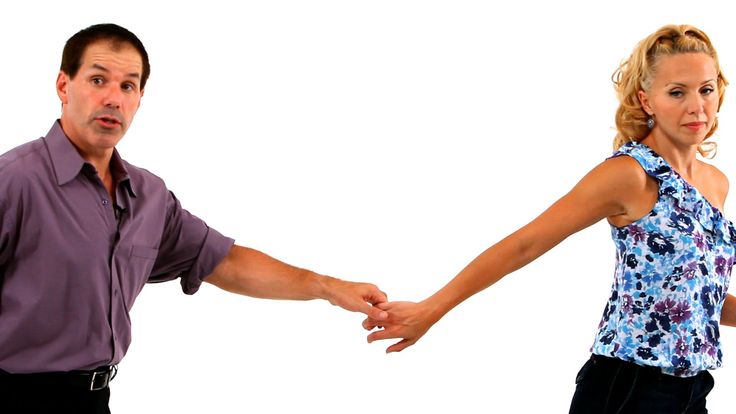 https://youtu.be/USXmK5QXwCc The video starts with the basic 6-count but without triple steps: the “rock step, slow, slow” rhythm in side-by-side position. ...
https://youtu.be/USXmK5QXwCc The video starts with the basic 6-count but without triple steps: the “rock step, slow, slow” rhythm in side-by-side position. ...
Basic 6-count moves with different rhythms Peter Strom and Stacia teach the basic 6-count rhythms: first groove-walking it (also known as the “slow” rhythm), and then adding the triple step. https://youtu.be/uDARWpHsF-Y The video starts with the basic 6-count but without triple ...
6-count rhythm basics and more moves Nicole and Kirk from The 920 Special show the basic 6-count rhythm with triple steps and a few moves. https://youtu.be/Fd7UIOM6wqA Review of the basic 6-count rhythm with triple steps. The moves in this video are: Basic ...
Send out from closed Audun and Charlotte show the finer details of the “send-out” move. https://youtu.be/EHubFEiS4tk Follow the instructions in the video. Attention: in this variation of the “send out” the leader starts with a forward rock-step on count 1 instead of . ..
..
Lindy Hop 6-count figures Manu and Ann from The 920 Special show a few more 6-count figures with triple steps. https://youtu.be/91FZSR9wQKk The moves in this video are: Inside turn into closed, Underarm turn where the leader turns also (a.k.a. She Goes ...
Review of fundamental 8-count moves Peter and Stacia show some basic 8-count Lindy Hop moves with triple steps. https://youtu.be/rfUdoXikhMc The moves in this video are: the Nothing, the Flip Flop, the She Goes (a.k.a. the Slingshot), the He Goes, the Lindy ...
Double tuck turn from closed Audun and Charlotte show the double tuck turn from closed position. https://youtu.be/qgDbEWh5vtE Follow the instructions in the video. The move in this video is the double tuck turn from closed position (a.k.a. the double spin). This is ...
Swing out footwork for leaders Kenny shows the solo leaders footwork in the swingout.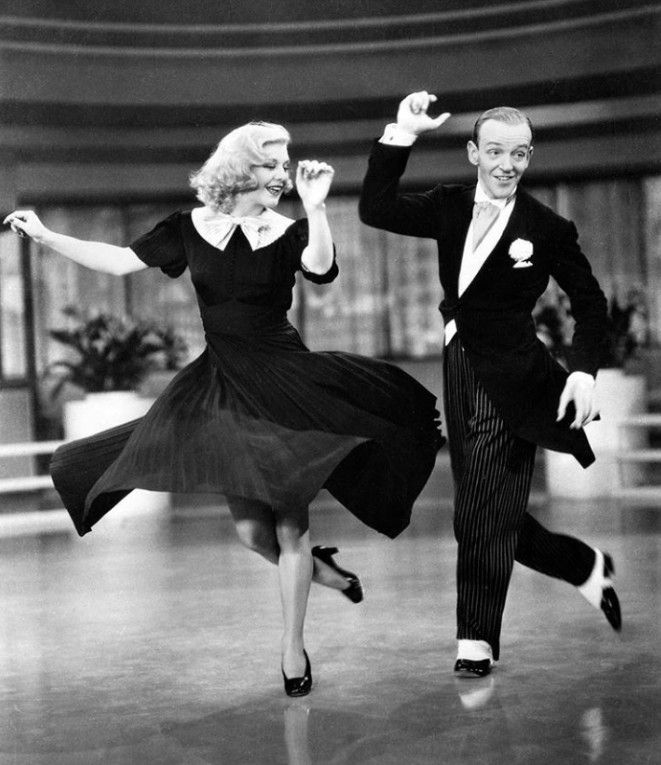 https://youtu.be/dtFRfucbNiA Follow the instructions in the video. – The swingout is the most famous move in Lindy Hop so make sure you practice your solo footwork alot. Teacher: Kenny ...
https://youtu.be/dtFRfucbNiA Follow the instructions in the video. – The swingout is the most famous move in Lindy Hop so make sure you practice your solo footwork alot. Teacher: Kenny ...
Swing out Technique Marcus and Janie show the basic Swing Out. https://youtu.be/88xB7bmia4Y In this video you will find the basic footwork for the Swing Out move. The Swing Out is always an 8-count move. Attention: at 1min45sec in the video, the focus ...
Basic swing out review David and Cátia show the basic swingout a fundamental move in Lindy Hop. Follow the instructions in the video. The swingout is the most famous figure in Lindy Hop but is also quiet complicated so take your ...
Swing Out from open position Patrick and Natasha show the Swing Out from open position leading the follower forward on count 1. The first part of the video focuses on doing underarm turns where the follower does not start with .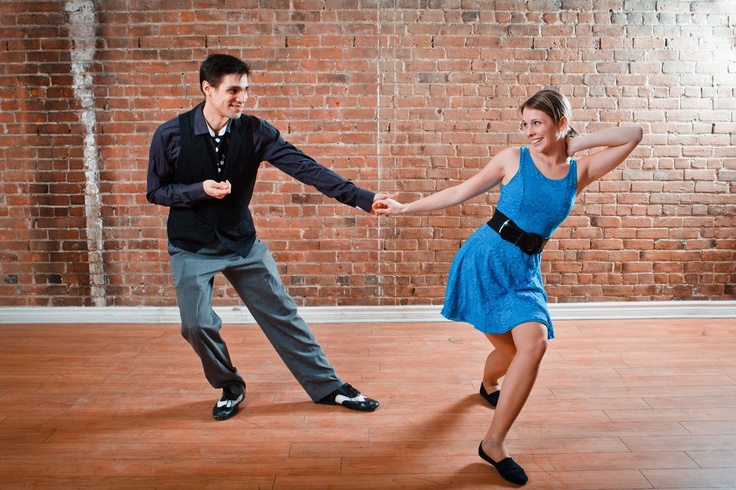 ..
..
Lindy Circle & Swing Out Kirk and Nicole review the Swing Out and the Lindy Circle. Lindy Circle from closed, Swing Out from closed, Lindy Circle from open. These are the classic all-important 8-count moves that every Lindy Hopper needs ...
20s Charleston with Variation Daniel and Gabriella show the 20s Charleston basic front-to-front as well as variations. Leaders: in the basic front and back 20s Charleston face-to-face, make sure that when you touch back on count 1 with your left ...
Tandem Charleston basic Spencer and Jessi show getting into the Tandem basic and how to get out. In Tandem Charleston, both the leader & the follower start their basic 30s Charleston by rock stepping back on the left leg. So ...
Swing out from open position Kirk and Nicole show a swingout from open position. At this point you should start to mix these following moves together. The moves in this video are: – Lindy Circle from closed position. – Swingout from closed position. – ...
The moves in this video are: – Lindy Circle from closed position. – Swingout from closed position. – ...
6 count variations Peter and Liza show some 6 count variations. http://www.youtube.com/watch?v=yY_xBdk4d74 The moves in this video are: – Crosshand Inside free turn. – Crosshand Inside turn. – Crosshand Inside turn to sneaky position. – 6-count to catch the hip bone. – Tuck turn out. Note for ...
Swing out with Outside Turns and Swivels Audrey and Brian show a Swingout with an Outside Turn and Swivels for the follower. The moves in this video are: – Swingout with Outside turn free spin. – Swingout with Outside turn (regular). – Swingout ...
Triple step rock steps and turn drills Kenny and Abeth show some drills to practice your turns. The moves in this video are:– Rock-step triple-step rock-step triple-step (back and forth).– Rock-step triple-step rock-step triple-step (back and forth) with turns.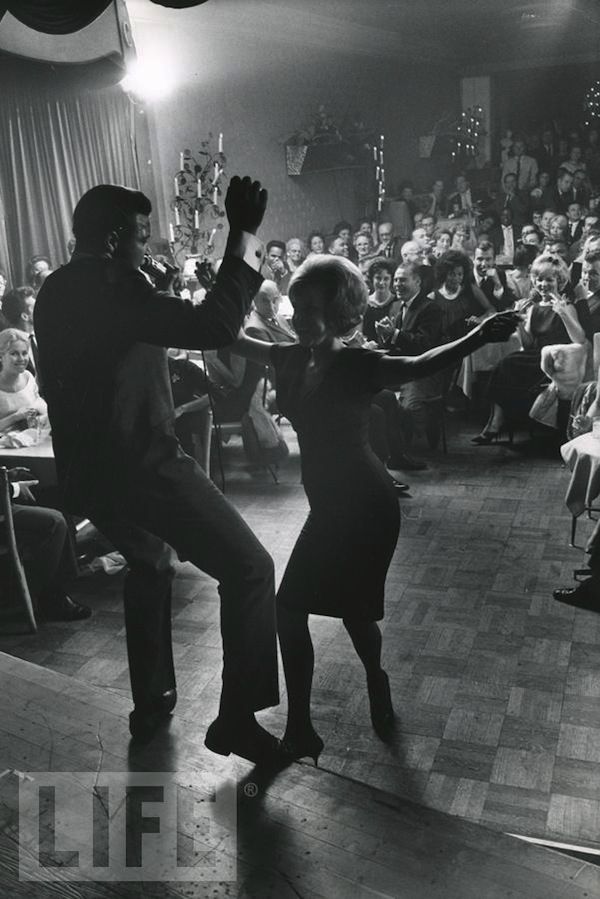 – Rock-step ...
– Rock-step ...
More important Swing out technique Ann and Kirk show some good technique points regarding the Swingout. https://youtu.be/bv_Xsyy3uAY The moves in this video are: – The Toss Across.– 6 count Side Pass.– Swingout from open position.– Lindy Circle from open position.– Lindy Circle ...
Swing Dance Partnering Ali and Katja show how to lead and follow direction changes in Charleston rhythm. Here Ali and Katja show how the leaders lead changes of directions in side by side position with basic Charleston footwork (also known ...
Left Side Pass Ali and Katja show the left side pass. https://youtu.be/6VfOAW2wbQs Important Notes:– Make sure that you keep the hand hold stable in the middle in between the leader and the follower.– Leaders lean in the direction you want your ...
Hand Hold in Swing dancing Ali and Katja show a common and very comfortable hand hold that is used in Swing dancing.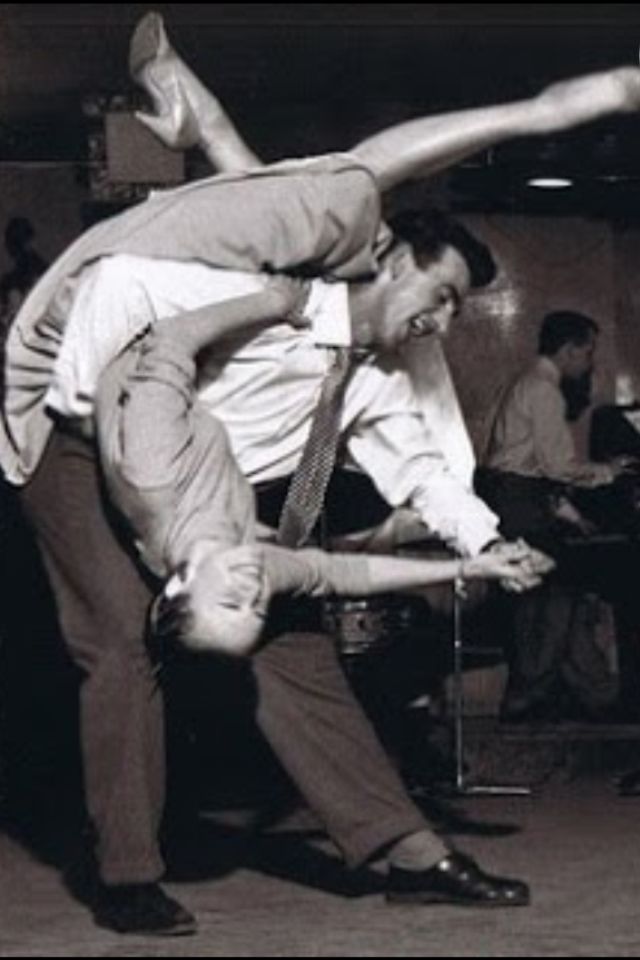 https://youtu.be/3cFPrQWFit8 Notes:– Leaders make sure that you never crush your followers hand.– Followers make sure you never hold on ...
https://youtu.be/3cFPrQWFit8 Notes:– Leaders make sure that you never crush your followers hand.– Followers make sure you never hold on ...
How to Lead Triple Steps Ali and Katja show how to lead and follow triple steps in side by side position. https://youtu.be/ZFVC01Sitvg Notes:– Leaders to lead a triple step in side by side position make sure that you lean slightly in ...
Swingout Clinic Peter and Stacia go through some important points regarding the Swingout. The Swingout is one of the most important moves in Lindy Hop and all dancers from beginner to advanced continously work on making theirs better and better. Make ...
Swivels Michelle and Doug show the followers Swivels on a swingout. This is one common way of doing the Swivels also known as the twists. The Swivels are the most famous followers styling in Lindy Hop and there are many ...
Swing Summit 2013 Competition Demo Here is a short video to demonstrate how an instructional video could look like. To find out more about how to win a free couple pass to Swing Summit 2013. A Lindy Hop dance camp ...
To find out more about how to win a free couple pass to Swing Summit 2013. A Lindy Hop dance camp ...
Basic Swingout David and Cátia show the basic swingout a fundamental move in Lindy Hop. https://www.youtube.com/watch?v=R1x_vWBZCNo Follow the instructions in the video. The swingout is the most famous figure in Lindy Hop but is also quite complicated so take your time going ...
Lindy Hop Basket Kenny and Delilah show a move called the Lindy Hop Basket. Follow the instructions in the video. – This lindy hop basic is a great progression pattern for leaders and followers. – Leaders make sure you don’t pull hard ...
Follower’s Swingout Footwork Jesse shows the footwork for follower’s in a swingout. Follow the instructions in the video. – The swingout is the most famous move in Lindy Hop so make sure you practice your solo footwork alot. Teacher: Jesse Hanus http://www.jessehanus.com Next Move Previous .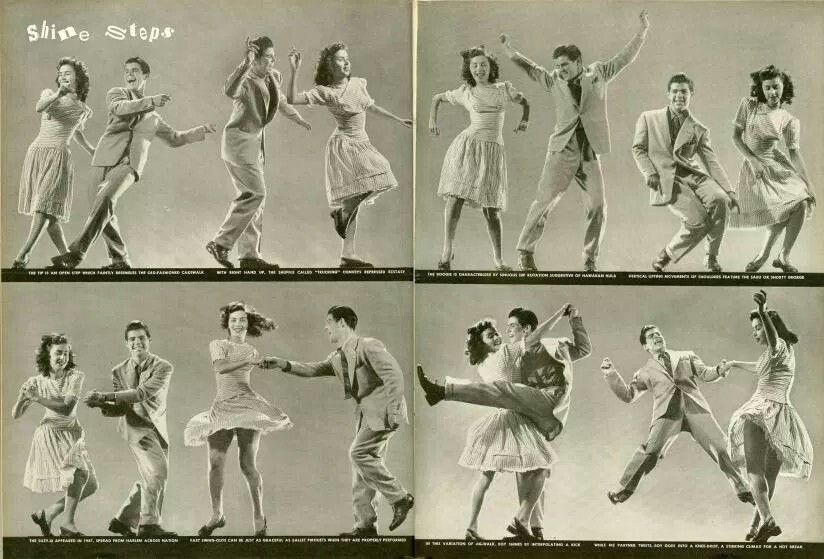 ..
..
Basic Tandem Charleston Kenny and Jesse show the basic Tandem Charleston. https://youtu.be/bN06_QrEstc Follow the instructions in the video. – Tandem is often also known as Shadow Charleston, Back to Back Charleston, Back Charleston.– You will learn more about how to get into ...
The Basic Collegiate Charleston Footwork Demonstrated by Hayley & Kibble https://youtu.be/tBfvwhDg7ug The 1930’s Collegiate Charleston Footwork Basic taught in 5 minutes. Teachers: Hayley Anne Watson & Kibble If you are totally new to the swing scene you can check out the Comprehensive free ...
Six Count with Triples Basic Step Demonstrated by Hayley & Kibble https://youtu.be/ZkkPdc8kyuc Six Count with Triple Steps – Footwork Basic taught less than 4 minutes. Teachers: Hayley Anne Watson & Kibble If you are totally new to the swing scene you can check ..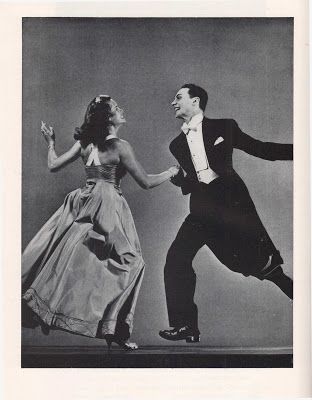 .
.
Eight Count with Triples Basic Step Demonstrated by Hayley & Kibble https://youtu.be/iof7JCqWZZE Eight Count with Triple Steps – Footwork Basic taught less than 5 minutes. Teachers: Hayley Anne Watson & Kibble If you are totally new to the swing scene you can check out ...
If you feel like you already know this material you can jump to the intermediate lindy hop course.
Lindy Hop Tips & Tricks for Beginners – The Vintage Woman
by
The Mood SistersLindy Hop Tips & Tricks for Beginners
Lindy Hop is probably one of the most revolutionary and liberating dances of all time! That is why we find it so important to not only dance Lindy Hop, but to know the historical background of this special dance that changed so many lives for the better – and still does!
Whether it’s the German swing kids that danced Lindy Hop against Hitler’s will, the Swedish youth that tried to imitate the American swing moves (not caring about how hideous they looked), the well known Whitey’s Lindy Hoppers performing at the Savoy Ballroom in Harlem – it brought a new, better feeling of life in a time where political economic issues made people suffer.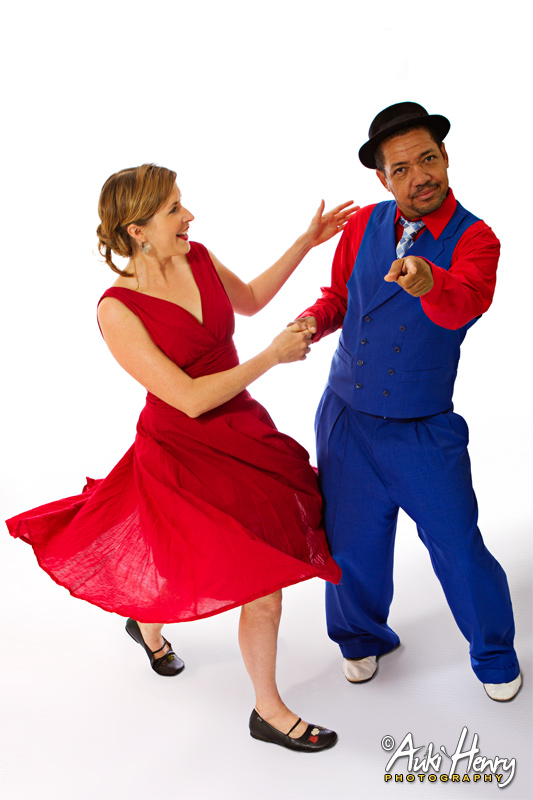 Dancing to the hottest new tunes of swing bands and orchestras gave people hope and happiness, and made them forget about their problems.
Dancing to the hottest new tunes of swing bands and orchestras gave people hope and happiness, and made them forget about their problems.
Even for us, 80 years later, a life without Lindy Hop would not be possible anymore! But four years ago, that was not the case at all. So how did we get started with Lindy Hop?
About The Mood Sisters
We actually began learning about swing dancing and swing music in the summer of 2016. There was a swing dance project for youngsters at our local youth club, and one day Ayana stumbled across a flyer promoting a first get together with everyone that was interested. One of the dance teachers would be none other than amazing swing DJ, Stephan Wuthe! Ayana was super thrilled about the project, and it would not take long until I, Emilia, joined the group too. Aside from learning the basic steps of swing dancing, we also got a lot of information about the swing kids in Nazi Germany.
It only took a few weeks until we got the so-called “swing fever” and could not stop dancing.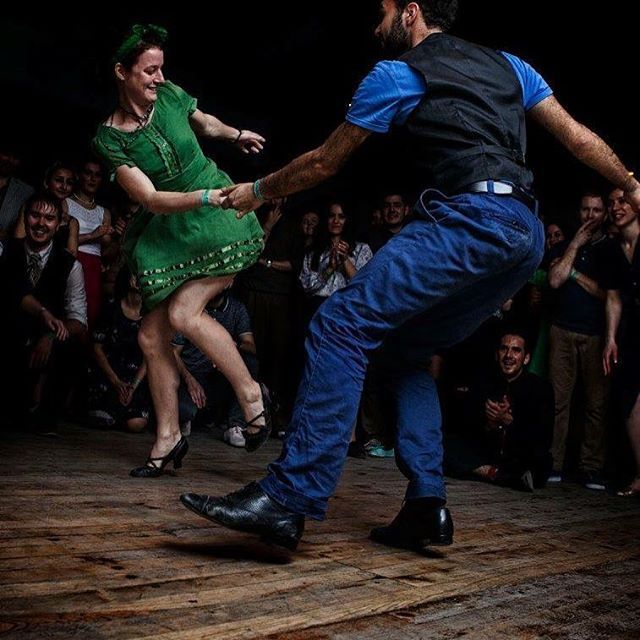 Whether we were at school or on the street we would always swing and twirl around, whistling “It don’t mean a thing if it ain’t got that swing.” Then we also began dressing in vintage and getting more into the whole lifestyle of the 1940s, turning up at swing dance events whenever we did not have to study for school. In 2019 we finally founded our dancing duo: “The Mood Sisters, ” and organized our own swing dance event for the first time.
Whether we were at school or on the street we would always swing and twirl around, whistling “It don’t mean a thing if it ain’t got that swing.” Then we also began dressing in vintage and getting more into the whole lifestyle of the 1940s, turning up at swing dance events whenever we did not have to study for school. In 2019 we finally founded our dancing duo: “The Mood Sisters, ” and organized our own swing dance event for the first time.
We also have a lot of fun teaching our passion, hoping to get more people our age into what was once the hottest dance of the youth, and nowadays seems forgotten among this target group. So today we want to give you some of our personal best tips and tricks to start dancing Lindy Hop, as well as some things to avoid. But please keep in mind that we are not professional dancers, by any means, just two girls who are absolutely in love with Lindy Hop.
Let’s Dance
We hope you liked the video! Here are our final tips:
- Try to turn up at swing dance events whenever you can (learning by doing).
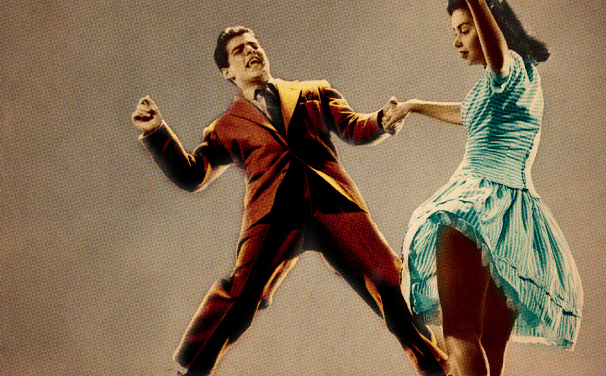
- If you get off beat or don’t know what to do next, just keep bouncing and your body will find it’s own way of creating new moves!
Swing Heil!
Follow The Mood Sisters
READ ALL ABOUT IT
How to quickly teach Lindy Hop, or how dancers breed
-
-
-
21
MAY
-
- How to quickly teach Lindy Hop, or how dancers breed
Another article on our website was not written by Peter Loggins, but by a no less talented and wonderful dancer Jamin Jackson . The article reveals ideas, thoughts, concepts in teaching Lindy Hop by Jamin. It will undoubtedly be interesting and useful both for those who are just learning the Lindy Hop and for those who are learning this dance.
 Swing Dance School presents to your attention the translation of the article:
Swing Dance School presents to your attention the translation of the article: "How to quickly teach Lindy Hop, or how dancers breed"
Everything starts small. We all know that easy paths to success are for the lazy. But we all need that way sometimes. Especially for those who do not have enough time to play the fool - and this is generally not bad.
In dance, as in life, there are fundamental principles on which everything rests. You can just look, or you can see through. So, get ready to look beyond the veil of complexity.
My goal is that after reading this article or my lesson, you will see yourself as a master, a beginner master. I present to your attention my "method of breeding lindy hoppers".
Below I present my experimental method, my vision of what Lindy Hop is at its very core. You will learn about the methods I use to help everyone who dances the Lindy: both students and teachers.
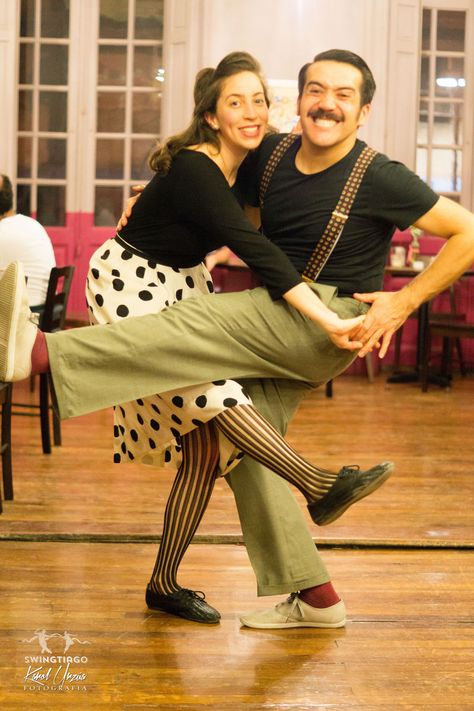
When you focus on the right principles, you will learn faster - and give up unnecessary expectations. Trust me, I wouldn't be able to attend over 105 dance events and spend 2,500 hours teaching Lindy Hop if I didn't focus on the principles.
If you understand these principles, you will free yourself from the unnecessary, and this will help you learn correctly and, most importantly, effectively. If you focus on the rules, you will want to break them. And often you break them in the wrong way, for the wrong reasons, and you lose the fun of the process.
In my lessons, I first of all talk about my expectations and what it means to learn to dance. I compare my students to young doctors who are practicing - and my partner and I help them with this.
I want them to stop seeing us as overseers. We are the ones who help them to be more effective in real life, and when they "graduate from med school" and are left to their own devices, they will not kill anyone.

The next step is to teach them to do simple things without thinking and not be afraid of it. It's complicated. We are usually taught that first you need to know, and then do . And this is contrary to reality. It's like an invisible barrier in the mind that prevents you from achieving mastery. Keeping it simple is the key to success, and it's hard if you lack understanding.
I like the following analogy: swing has three foundations, pillars, fundamental principles. All three are necessary, and if one support is removed, it will be very difficult to learn and teach Lindy Hop. Knowing about these three things is a must - about how to take a shower every day.
In addition to these "three pillars", each category has many more optional subcategories - for example, you can, but do not have to do a massage every day. It's for someone who likes it. Below I list these "pillars" strictly in order of their importance.
First, rhythm.
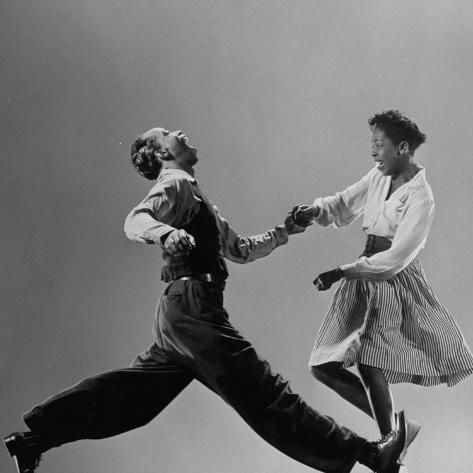 Rhythm is the basis, the foundation, like a building: it must be stable and support the whole structure.
Rhythm is the basis, the foundation, like a building: it must be stable and support the whole structure. Different people understand this word differently. When I explain to someone how to quickly learn Lindy Hop, I have to show what rhythm is so that they understand me correctly, and build on this in the future. You can watch video:
If I do not explain what I mean by the word "rhythm", then the student can imagine anything. Someone will imagine a clay foundation or gravel - I mean concrete.
If I do not explain what I mean, it will be impossible to follow my principle of simplicity and straightforwardness, and a hail of questions asked in a nervous atmosphere will rain down on me.
So I'm showing you what rhythm is with two instruments that will help them navigate the rhythm easily (it just takes a little practice).
 First, a hammer. I usually talk about him after the students have learned rock-step.
First, a hammer. I usually talk about him after the students have learned rock-step. Here is the video:
Second, the nail. I talk about him when they understand and start doing triple steps. See how simple:
Beginners usually ask a thousand questions, just like seven-year-olds. After that, we all join hands and stand in a circle and try to dance to the rhythm. Rock step, triple step, rock step, triple step.
Of course, everyone gets confused, but they try very hard, because we all hold hands and depend on each other. Videos:
Did you complete this exercise? People had fun, everyone smiles? Victory! They are already on the way to mastery, although they themselves do not suspect it.
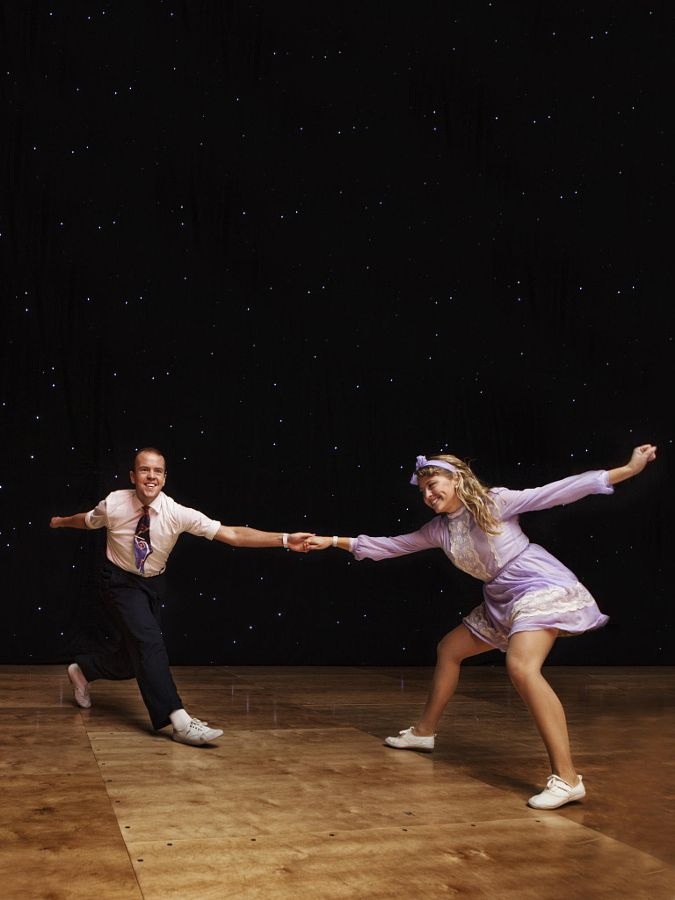 Small victories lead to big successes, small failures lead to big failures.
Small victories lead to big successes, small failures lead to big failures. Our next foundation, fundamental principle is dance figures .
In the context of swing dances, we perform “figures” when a partner and a partner interact with each other.
As practice shows, almost all students will pay more attention to figures than to rhythm. I repeat to my students many times that rhythm is more important than figures. The figures must fit into the rhythm. Here's an illustration of why you shouldn't focus on shapes in the first place:
Before we pair up, each of us is a separate, independent dancer. After we have united, we are a whole, within which energy is redistributed in a certain way. We move and execute figures. And that requires clarity of purpose.
As if two people are united into one.
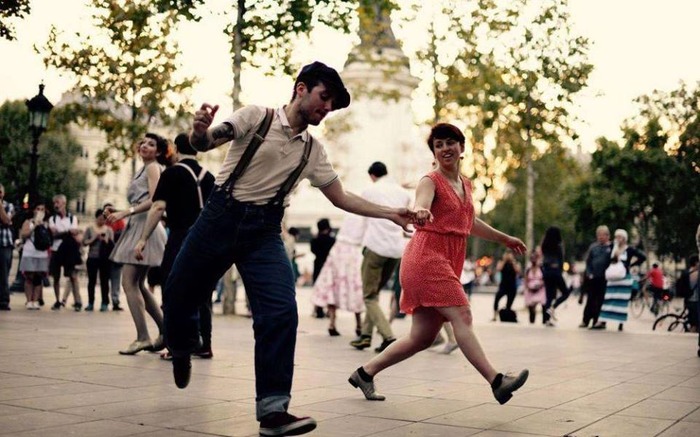 But as soon as they unite and start moving, it turns out that they have different tasks.
But as soon as they unite and start moving, it turns out that they have different tasks. The partner controls the behavior of the whole and creates energy.
Partner receives energy and moves until it runs out, or until something changes.
I keep emphasizing the importance of this idea when we have learned the basic patterns and are going to bring them to life with rhythm.
When we consider both roles from this point of view, it is clear that the dance depends on and on the partner, because it is she who controls the energy received. If she doesn't move, that's it, the dance is over. It doesn’t matter how a smile shines and how talented the partner is, how much he can do - the dance ends or begins at the will of the partner.
To agree is much easier than to balk and stop. If a partner understands this life principle, she will know what to pay attention to in the classroom. Usually a partner hears a lot of theory about how to lead, but actually learns to lead herself.
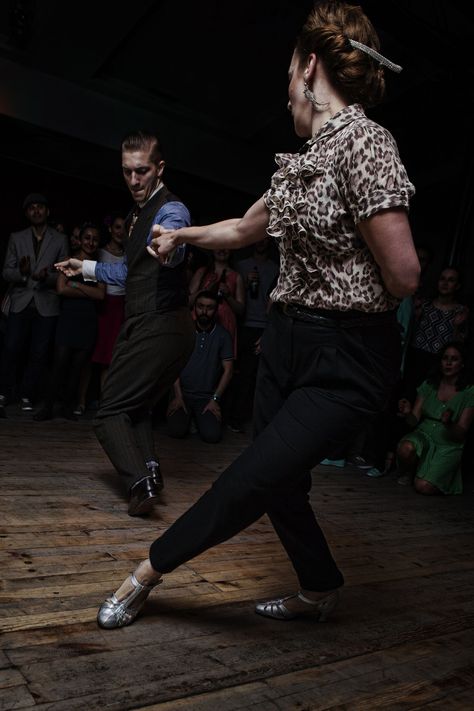 After all, she knows in advance what a partner should do.
After all, she knows in advance what a partner should do. And this makes it very difficult to grow. So you need to help partners focus on what they can really change, and in the future they will improve easily and naturally on the dance floor, already by themselves. When partners understand this idea, classes become more productive. Partners independently correct their own mistakes and learn to delegate responsibilities.
And if this is not explained in time, then the partners ask questions that partners should actually ask. And students misunderstand the basics and their role in the dance.
From my personal experience - I will now list the most important skills for partners that can be taught in the classroom. As soon as the partners understand them, they will immediately begin to correct their own mistakes. Although it will take some time to reach perfection.
Partner skills require more time to learn:
- Hold your torso over your feet to rock and triple-step exactly to the beat.
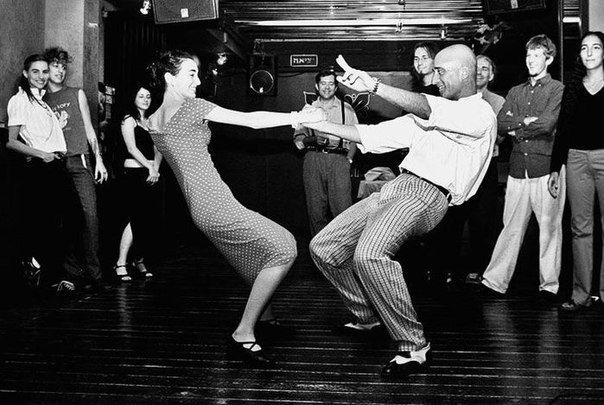
- Do not create the energy yourself , accept its partner, absorb and move accordingly.
- Hold the rhythm! You will feel the force of gravity, it will be easier for you to control energy and follow steps clearly.
- Walk in a straight line , moving according to the received energy.
Here is a set of tools that should be taught to a partner in the classroom, and then she can continue to learn on her own. If you focus on always following these rules, you will grow. If you focus on achieving a certain result, instead of improving your partner’s skills, you will think like a partner.
Focus on your condition, not where you need to go. The partner should take care of this.
Failure to comply with any of these principles leads to the fact that it becomes difficult to transfer energy within a couple. Partners have to protect their partner, not dance with her.
Different people express certain ideas in different ways.
 Again, everything I said is my effective approach . These are fundamental principles that allow you to absorb energy, move in accordance with it, until it fades or the situation changes.
Again, everything I said is my effective approach . These are fundamental principles that allow you to absorb energy, move in accordance with it, until it fades or the situation changes. Some argue about the importance of these principles and remain silent about how capable they are of themselves.
If someone talks more than they do, it means that they are afraid to act according to extremely simple instructions.
They know how to say that everything is wrong and wrong. They do not know how to do it simply and correctly. This is fine. Do you want to be among those who quickly learn to dance by doing simple things and improving over time? Like children who are learning to walk, although they cannot read about it or have a discussion about it.
Yes, there are many little things, nuances... and they are a continuation of the main principles: they cannot replace the basics. Don't waste a second on theory, discussion of meaning, or argument.
 It is easier to give birth than to resurrect a baby. Do you need to learn fast or slow? Just put my conclusions to the test, or teach these principles to a beginner and see how quickly he progresses.
It is easier to give birth than to resurrect a baby. Do you need to learn fast or slow? Just put my conclusions to the test, or teach these principles to a beginner and see how quickly he progresses. As for partners, there are completely different principles:
- Communication should be clear and painless . This paragraph is about freedom and what can be done. Look for what you can do, not what you can't.
- Wait for the reaction of the partner after you led her. This will make it easier for you to understand how you transmit energy, and over time you will become better at managing it.
- Learn to move exactly to the beat on rock and triple steps. These are the very basics. Then you will grow, avoid repetition, and this will result in variations, features of your unique style. For example, it will be different intensities, stretches, syncopations, slides .
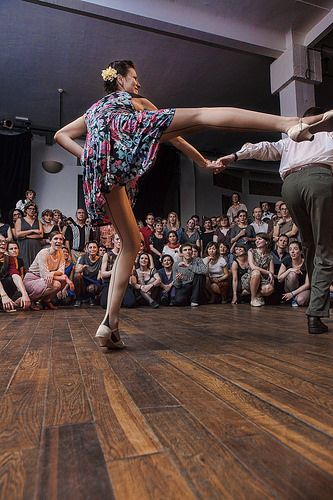 .. and so on.
.. and so on. And again, I emphasize that you need to start painlessly, easily, but you will have to improve the ability to clearly, clearly communicate your intentions to your partner. Time will pass, and you will feel that the couple is a single organism of two people. A partner is not a thing that you control. She is part of you, and you should treat her the same way you treat yourself.
The partner is responsible for establishing contact. So it's very important to understand the partner you're dancing with. And you can understand your partner, leaving her space for self-expression. If she is talkative and you don't let her talk, she will interrupt. If she is closed off, and you constantly give her the right to speak, you will get awkward pauses. In any case, you will have to adapt to your partner and understand that the partner is responsible for starting a conversation and establishing contact. Carry on a dialogue, and do not try to teach her. Otherwise, the dance may still work out even if the partner is talking all the time, but, in my opinion, it's just impolite.

The only thing you can't control, no matter how much you want to, is how well your partner follows her basic principles. Don't forget that you, as a partner, are responsible for working with her skill set. First of all, the partner should think about what both of them can do in a pair, and not about what he himself can do.
If the partner does not keep the direction, does not give a counterbalance, does not feel the rhythm, the partner will not do anything about it. If the partner does not work, there will be no movement - and if you insist, it will be unpleasant. Be patient. You may not be able to show everything that you can do in a pair. Create beauty together and take care of yourself and her.
The last principle is, in fact, the culmination of the first two principles.
Momentum is what happens when one body responds to the movement of another.
Over time, you will feel how it works. I like the following analogy: momentum is the people who go in and out of the house after the building is completed.
 This is the final stage: the foundation is ready (rhythm), the walls and roof (figures) are ready, and now the settlement is to be done.
This is the final stage: the foundation is ready (rhythm), the walls and roof (figures) are ready, and now the settlement is to be done. After we pay attention to the rhythm and begin to execute the figures, we simply explain how the impulse works. There is no need to teach people how to make impulse work.
Here, for example, gravity brings us back to the ground after a jump.
How to teach a person to jump? Rhythm: you need to bend your knees. Figures: you can help yourself with your hands. Impulse: and gravity will bring you back by itself.
Simple causation. If a misunderstanding arises in a couple, this is usually due either to the fact that the partner and partner forget about the specifics of their roles, or to the fact that the partner and partner grow and develop in different directions.
What is happening is very interesting to watch. I can simultaneously show the same figures to people who already have experience in swing dancing, and to completely new people.
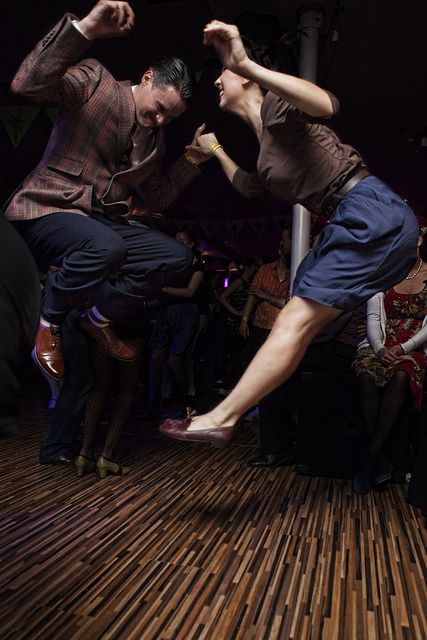 And in many cases, those who know less about swing understand the fundamental principles better and apply them without hesitation. It's like giving a smartphone to a child or an adult for the first time.
And in many cases, those who know less about swing understand the fundamental principles better and apply them without hesitation. It's like giving a smartphone to a child or an adult for the first time. And this is not surprising. The fact is that if you focus on those things that will be discussed next, and forget about the fundamental principles, then it will become more difficult to transfer energy within a couple.
Musicality, syncopation, intensity, style, turns in all their manifestations - this is only a small part of the dance subcategories. It is not necessary to perform them, the dance will work without them. And if you think only about them, and not about your basics, then interacting within a couple will most likely not work.
For example, you want to learn how to ride a bicycle. And you immediately begin to learn how to jump on the curb, perform tricks. Yes, you can, but you will initially do everything wrong.
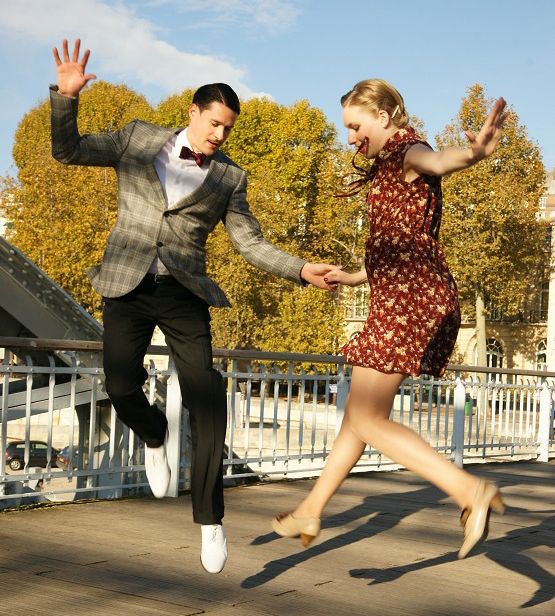 I can take people from the street and teach them to keep the rhythm and that's it - and after two dances it will seem that they know how to dance. They know what rhythm is, and the partner moves and invents figures, creates an impulse for the partner. They don't know how to control the energy they take in, they don't know that they have to keep moving until the energy runs out or something changes, and that's okay. These are social dances, and when we teach them, we explain all this.
I can take people from the street and teach them to keep the rhythm and that's it - and after two dances it will seem that they know how to dance. They know what rhythm is, and the partner moves and invents figures, creates an impulse for the partner. They don't know how to control the energy they take in, they don't know that they have to keep moving until the energy runs out or something changes, and that's okay. These are social dances, and when we teach them, we explain all this. But even without that, I can make people dance.
Rhythm, shapes and momentum are as important to swing as pedaling, steering and balance are to riding a bike.
If the lady performs the figures and does not fall into the rhythm, she will most likely step too wide, will not be able to keep the body over her legs, and it will be difficult for her to understand how much energy to give. This is not the case with all partners, of course. But with the majority, it is. Imagine that the house stands on an unreliable foundation.
 I would be nervous.
I would be nervous. Rhythm helps the partner feel gravity. And if you want to learn how to dance fast, then gravity is your first friend. You move as gravity allows you to. Try jumping rope without bending your knees and see.
If the partner leads incomprehensibly, the partner is nervous, because she depends on the partner, and he decides where the couple is moving on.
If the partner does not walk along the line, having received energy, and does something else, the partner has to protect her, and not dance with her. The partner will be able to keep everything under control, but over time, lack of clarity will lead to the fact that discontent and irritation will accumulate inside.
The partner who impatiently tries to get the partner to perform the figure - instead of performing the figure with her as a single organism - simply misses all the beauty and endless possibilities of causation.
And so on and so forth.
This whole knot of futility and complexity is unraveled when the couple turns their attention to fundamental principles and both stop blaming each other.

I explain these principles to each group because I expect my students to become Lindy Hop masters. For me, they are all beginners. They become masters the moment they apply these principles. The only difference between them and experienced dancers is that the latter apply the principles more effectively.
I never think the principles are known for sure. Wherever I go, I repeat them over and over again, and whenever the principles are understood, I see the result.
Beginners and experienced dancers who want to improve their performance - they just start applying the basic principles and they reach the goal. Those who ignore the simplicity and insurmountability of the basic principles are like builders who build a building on a “whatever it takes” principle. First, everything should be planned on paper, and then put into practice. Not vice versa. First the foundation, then the roof. Not vice versa.
To learn how to dance quickly, you need to dance with those who better understand and apply the basic principles.
 If not, it is the blind leading the blind. We are all in school, just in different classes. There are those who came to dance before you. There are those who came only yesterday. You are affected by everything that happens around you. Do you understand the basics better than some newbie? Go and dance with him .
If not, it is the blind leading the blind. We are all in school, just in different classes. There are those who came to dance before you. There are those who came only yesterday. You are affected by everything that happens around you. Do you understand the basics better than some newbie? Go and dance with him . Maybe you are already an intermediate level and want to dance even better. Then invite to the dance someone who knows the basics better than you.
Or maybe you are an experienced dancer and teach beginners. And you lead them through all that difficult path to perfection that you yourself went through without understanding these basics.
Now I have shown you an easier way. Try it differently. Show them the basics and let them grow on their own. I warn you: they will grow faster than you. So do not be offended and do not envy. Be proud of them, help them grow faster and teach others. You don't know in advance what this or that person will bring to swing in the future.

When I teach dance, my goal is to teach students to dance faster than I learned myself, if they want to. If you explain the basic principles, your students will improve much faster depending on how they work. They will work on their mistakes and understand where is the main thing and where is the secondary, which can be painlessly adopted from others. And everything they learn additionally will add to their dance of individuality, without taking anything away.
I'm looking forward to your feedback and stories about how many experienced dancers have appeared in your community!
Source
Translation: Anastasia Besman, 2015
-
-
-
Wedding dance
-
Wedding dance performance in the style of rock and roll, retro, vintage or hipsters (Charleston, Lindy Hop, boogie-woogie, rock and roll, blues). The most important day you will remember for the rest of your life!
-
November 2022 | ||||||
|---|---|---|---|---|---|---|
| Mon | W | Wed | Thu | Fri | Sat | Sun |
| one
• • • | 2
• • • | 3
• • • | four
• • | 5
• • | 6 | |
| 7
• • | eight
• • • | 9
• • • | ten
• • • | eleven
• • | 12
• • | 13 |
| fourteen
• • | fifteen
• • • | 16
• • • | 17
• • • | eighteen
• • | 19 | 20 |
| 21
• • • | 22
• • • | 23
• • • | 24
• • • | 25
• • | 26
• • | 27 |
| 28
• • | 29
• • • | thirty
• • | ||||
Lindy Hop Dance - LindyHop. (Modern dances)
Lindy hop20s - 1930s. Lindy hop developed in parallel with jazz music and belongs to the class of swing dances.
Lindy Hop
Lindy Hop incorporated the features of Charleston, tap dance, and other dances that existed simultaneously with it and was the founder of a whole direction. It was from the Lindy Hop that boogie-woogie later arose when this popular dance spread from America to Europe.
Until now, 9 is more popular in America0020 lindy hop and in Europe boogie woogie .
In the 1980s, the Lindy Hop was revived by American, Swedish and British dancers. Currently, Lindy Hop schools exist in many countries of the world, incl. and in Russia.
Features of the dance
Lindy hop is a pair dance that is danced to the classic dance jazz - swing. Dance is an expression in movement of the drive, energy and emotion of the swing.
Like the Charleston, which is its ancestor, the basic step of the Lindy Hop consists of eight counts, and it is danced both solo and in pairs. In the open position, the partners hold each other by one hand; in the closed position, the position of the hands resembles the position of the hands in a waltz.
The dance disappeared from the dance floors of the world for some time, but in the 80s of the 20th century it was revived by the efforts of Swedish, English and American dancers. Today you can learn Lindy Hop in dance schools around the world, Russia is no exception.
The dance is performed both solo and in pairs and consists of eight counts for each step.
There is an open and a closed lindy hop position in which partners hold each other with one and two hands respectively.
A closed position is somewhat reminiscent of a waltz.
The dance is replete with a large number of jumps, original support partners (the so-called air-steps - air steps).
Lindy Hop is unthinkable without improvisation, filled with boundless drive and eccentricity. Lindy hop dancers try to show the audience something extraordinary, master various tricks, almost circus acrobatics.
For true fans of the Lindy Hop, this dance has long been a lifestyle. Lindy Hoppers say: We dance the Lindy Hop whenever and wherever jazz, swing and rockabilly music is played. For us, it's more than a dance."
Lindy hop dancers try to show the audience something extraordinary, master various tricks, almost circus acrobatics.